In a parking lot full of demo bikes there was only one Roadster. Just looking at it I knew it was going to be fun to ride. I was informed that Harley-Davidson would appreciate it returned in roughly the same condition as when I rode off, which was emphasized when my signature was required on a sheaf of papers that outlined what would happen if it wasn’t.
This bike was obviously designed for twisty roads and there’s no shortage of such in central New Hampshire. It was fortuitous that these surfaces ranged from freshly paved down to grass growing in the cracks, which gave me a feeling for the unique suspension on this H-D model. The Showa 43mm inverted front forks have 4.5” of travel and are so superior to the old school, 39mm forks on the Forty-Eight (1200X) Sportster that comparisons are pointless. And it doesn’t take a genius to understand that the adjustable preload rear Showa shocks with 3.2” of travel—an additional 1.6 inches of travel compared to other Sportsters—is easier on the spine. Even that mere 0.6 inches of additional travel in front can make a substantial difference. This certainly was true in one particular corner where the pavement was rippled like an old corduroy jacket.

Fitted with dual 300mm floating discs gripped by a pair of Nissin two-piston calipers it promises stopping power; especially for a bike that weighs only 568 pounds—plus a bit more when I was on it. I never did use the optional ($795) ABS system, but since ABS (on European bikes) has saved my butt three times I advocate it strongly. The 1200X Sportster uses the same 260mm rear disc and Nissin two-piston caliper as the Roadster, but has only a single 300mm disc in front. I’m used to the stopping power of dual front discs, but those who aren’t might find that a lighter touch on the brake lever will keep them in the saddle and off the gas tank.
This bike is higher than other Harleys with a seat at 30.9” laden. The 883 (XL883N) has a seat height of 28.9” and the 1200X one of 27.3”. Combined with the high position of the footpegs the Roadster becomes suitable only for those of medium height. The 19” front wheel and 18” rear increase the ground clearance and yes, it can lean more—three degrees more—than other Sportsters. Put on shorter, custom pegs and I bet another degree or two of lean could be added to the almost 31 degrees of which it is now capable.
What initially caught my eye and sparked my desire to test ride this bike was the angle of the front forks and the short wheelbase. Specs state it has a rake of 28.9 degrees and a trail of 5.5 inches with a wheelbase of 59.3 inches. Although this is only 1.1 degrees of less rake and 0.9” more of trail compared to the 883, it looks radical. The change in steering-head angle shortens the wheelbase by only 0.3 inches, but combined with the bobbed rear fender and chopped front one the Roadster gives the appearance of an aggressive street bike. In competition this could make a substantial difference in handling, but on the road it would rarely be noticed.
The slightly turned-down bend of the handlebars is another unique feature of the Roadster that improves control in the corners and that I found comfortable even on the freeway.
In terms of power, the Roadster is nothing like the old dog of a Sportster I once owned. Rated at 76 ft/lbs of torque at 3750 rpm, compared to 70.8 at 3500 on the Forty-Eight and 53.8 at 3750 on the 883, it has plenty of acceleration. I didn’t actually reach 3750 rpm until about 85 mph in fifth gear, and at 4000 rpm and 90 mph the engine was running like a Swiss watch. For more practical riding one will find themselves staying between 2700 and 3200 rpm—but this bike likes to be cranked. I wonder how it would perform when fitted with the Screamin’ Eagle Street Performance Kit ($2,159) and Screamin’ Eagle Heavy Breather ($349)?

The drive and gear ratios are the same for the Roadster as for the Forty-Eight, but quite different from the XL 883N, although the final belt drive (29:68) ratio is the same. In city traffic these ratios make a tremendous difference when rapid acceleration is required and on country roads the extra torque is just plain fun.
The 3.3-gallon gas tank will take you—depending on how aggressively you ride—about 150 miles, whereas the Forty-Eight’s 2.1-gallon fuel capacity restricts one to places where gas stations are prevalent. However, the Roadster is not a touring, or even a sport-touring bike so fuel range isn’t an issue.
One of the first things I would change on the Roadster is the seat. The stock seat is narrow, hard, and just plain uncomfortable. Unless the passenger was rather petite I doubt anyone would want to sit on the pillion for hours. The optional Café Solo seat ($349) might improve the aesthetics of the Roadster, but not having sat on one I can’t vouch for its comfort.

Although it is strictly a personal preference, I’d swap out the standard headlamp for the optional Daymaker LED ($399) and then install the LED turn signals ($139) while I was at it. I like to be seen on the road and if I must make a night run, lighting up the world of my near future appeals to me.
The warning indicators are cleanly integrated into the handlebar clamp while all the instrumentation is packed into a 4-inch diameter clock-style case. The top half of the instrument housing is an easy to read analog tachometer, plus an orange warning light for low fuel. The low half contains digital readouts of the speedometer, odometer, and time that can be cycled through, and set by, a switch on the handgrip. At night the digital numerals are easy to read, but during the daylight, angles can make them extremely difficult to see. A small cowl on the bezel would improve this somewhat, but this is not yet an option available on the market.
The unique aluminum cast wheels and the swept-back pipes with heat guards are solid design elements that help make the Roadster an eye-catching bike. Paint schemes are black with charcoal pinstriping; flat black with red; intense red with red; and silver/black with burgundy. (MSRP ranges from $11,199 to $11,749 depending on paint selection.) However, the real beauty of this Sportster is felt in the corners, not seen on the curb.

The highways were heavily patrolled and set with speed traps during Laconia Motorcycle Week, but I took a risk and got onto the Interstate. The Roadster is very stable at higher speeds and even at 90 mph still had additional torque on hand. Returning on a twisty highway that had a fair amount of broken pavement demonstrated that the new suspension system was a beautiful thing. Even slightly (ahem) above the speed limit the suspension system provided stability in the corners. On newer pavement, braking just before entering a curve was delightfully smooth while the torquey 1200cc engine easily pulled me out the other side.

Although the Roadster looks like a Harley it doesn’t really feel like one. For riders who like spending a day canyon carving or zipping down country roads filled with curves and elevation changes, this is the bike for them. I expect it will appeal to younger riders who are more performance oriented and fitted with Screaming Eagle upgrades would compete with some of the more popular crotch rockets. In the final analysis all I can say is, this is a fun bike to ride.




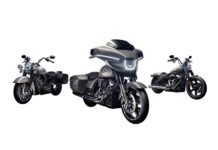
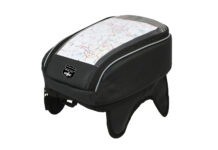
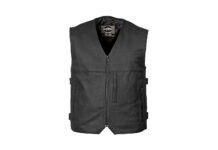
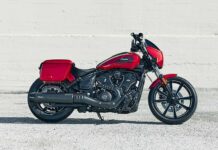
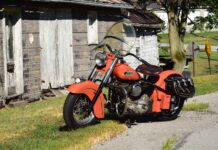










Can you put 10.5 rear shock on 2016 roadster to lower it?